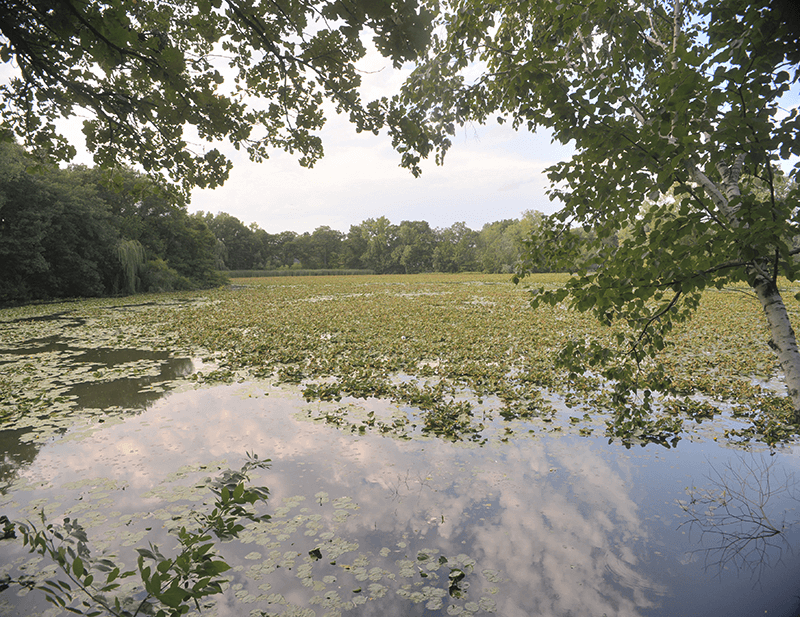About 75 people gathered at Albert Kordiak Park in Columbia Heights on Aug. 16 to hear from county and city officials about Highland Lake. They had to sit outside the pavilion at the park because the area under the roof was taped off and could not be entered.
Jeff Perry, Anoka County Parks director, said the posts holding up the large roof were judged to be unsafe because of rotting, but he said the county hopes to fix that problem in the next year. He said the options right now are to replace the footings for $85,000 or get a whole new pavilion for $240,000.
Perry said the county is looking to a grant from the state to improve the park’s trails, pavilion, and bathrooms. The county would pay half the cost.
The timeline for the work to be complete is the fall of 2024, but the pavilion may be dealt with prior to that. Perry said letters of support for the project might help obtain the grant.
Most of group had gathered hoping that something could be done with the lily pads that now cover about 90% of the 15-acre lake.
County officials, however, said the Minnesota Department of Natural Resources controls the fate of the lake, and the state agency is not willing to permit any removal of the vegetation because it is natural.
Columbia Heights Mayor Amáda Márquez Simula said the effort to remove the pads was far from over, and she hoped a citizens group could be formed to lead the way.
Highland Lake occupies about half of the county park, which is the oldest county park in Minnesota, dating back to the early 1960s.
Several county speakers, including Anoka County Commissioner Mandy Meisner, spoke about the park and its future.
Anoka County staffer Mitch Haustein told the group that the lake has storm sewer drainage from 140 surrounding acres. He said the lake does not meet water quality standards at this time, and the storm sewer drainage may be contributing to the increase in the lily pads.
Haustein also noted that the lake’s deepest point now is 3.5 feet. A resident said at one time the lake was eight feet deep.
Quinn Taylor, a natural resources staffer for the county parks, called the lily pads “floating native vegetation” and said the DNR will not permit the removal of native species. He also said a recent survey found a rare pond weed species in Highland Lake.
This past July, 30 geese were removed from the park, and Taylor said there hasn’t been a goose problem since then.
People at the meeting had a chance to sign up for volunteer groups that are eliminating buckthorn from the park. The next effort will be Oct. 7.
Taylor said 20 trees had been planted in the park over the last year to replace the ash trees that are dying. He said the stumps left from the ash that were cut down will be ground soon.
Those in the audience had several comments for the county and city officials. One resident recalled that even a couple of years ago, there were fish in the lake and those fish drew in osprey and eagles to Highland Lake. He said now, with the lily pads, the fish were gone, and most of the turtles and other wildlife were also were gone.
Márquez Simula said Columbia Heights had reached out to the DNR but with no success. “But they are aware of our concerns. Will we stop? Absolutely not. But right now (removing the lily pads) is not their plan for the lake.”
Councilor Connie Buesgens suggested a letter writing campaign to urge the DNR to reconsider.
Márquez Simula asked for core group of about five people to continue to work on the lily pad invasion. She said meetings on the issue will continue.
Almost 90% of Highland Lake’s surface is covered by lily pads. The DNR says they can’t be removed. (Photo by Al Zdon)
